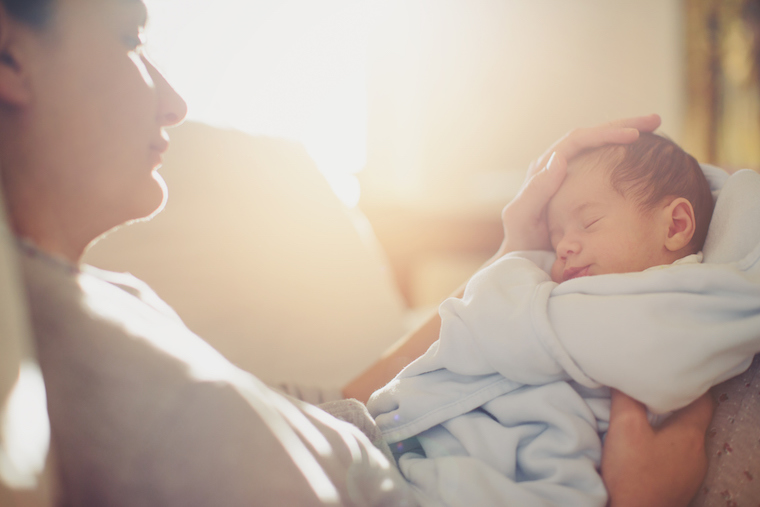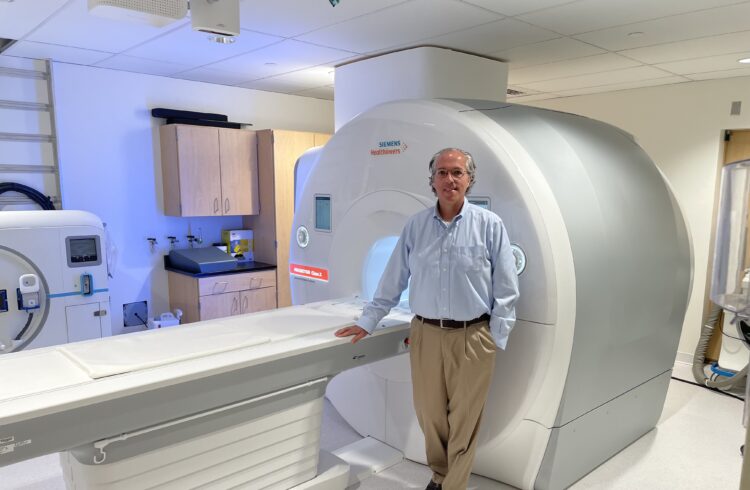
A nationwide survey of hospitals has revealed a wide variety of approaches to newborn skincare – including bathing – that could ultimately have lasting effects on a baby’s health and wellbeing.
Believed to be the first of its kind, the survey sought to document newborn skincare practices at hospitals around the country. Doctors have increasingly come to appreciate the importance of infant exposure to natural skin microbes, but there are no clear evidence-based guidelines for hospitals to follow.
The result, the researchers found, is a mishmash of practices that sometimes break down along regional lines.
“The variation in what hospitals are doing for newborn skincare is a direct result of previously not having a good understanding of what really is the best way to care for a baby’s skin,” said researcher Ann L. Kellams, MD, of UVA Children’s. “The hope now is that this work will challenge us all to take a look at the evidence and incorporate practices that protect babies the most.”
Newborn Skincare: What’s Best for Baby?
The skincare babies receive in the hours and days after birth has long-term effects, shaping breastfeeding outcomes, infant skin health and even infection rates. For example, children who are birthed vaginally are known to have decreased rates of childhood allergies compared with those born by caesarian section.
That said, there is little hard evidence on health outcomes associated with delayed bathing and other newborn skin practices, such as the use of specific soaps and cleansers. That often leaves doctors with conflicting opinions, often built on anecdote and personal experience.
To get a sense of the practices in place around the country, the researchers sent 16 questions to nursery medical directors at 109 hospitals that are members of the Better Outcomes through Research for Newborns (BORN) network. The questions asked about bathing practices, the products used and the advice given to parents, among other topics.
The responses indicated:
- 87% of hospitals delay the first bath by at least six hours.
- 10% send babies home without a bath, a practice more common in non-academic centers and on the West Coast.
- There is a huge variety of products and procedures used, though almost all include a “baby” soap containing detergents known to compromise the newborn’s skin integrity.
- Bathing advice for parents, such as whether they should use soap when washing the baby, is “inconsistent and potentially contradictory” among healthcare providers. This can leave parents confused and uncertain what to do.
The evidence underpinning most hospitals’ skincare practices is “scant,” the researchers report in a new scientific paper outlining their findings. They are urging the formulation of more consistent guidelines built on hard evidence.
“Given the potential widespread clinical impact of newborn skincare and the paucity of data to support or refute widespread adoption of specific practices, further research is needed to improve and standardize care in U.S. nurseries and mother-baby units,” they state.
COVID-19 guidelines may also be needed, they note. “Based on one large case series of maternal hospitals in New York City showing no increased morbidity to newborns, authors recommend that early skin-to-skin contact and delayed bathing can be practiced even in newborns born to mothers infected with COVID-19,” the researchers write.
Developing better, evidence-based guidelines in general would benefit all parents and infants, Kellams says. “In the future, we may be seeing a decreased emphasis on soap, an increased emphasis on oil-based cleansing and an increased emphasis on the application of emollients,” she said. “Better skin integrity would offer more protection to the babies against infection, development of allergies, etcetera.”
Bathing Findings Published
The researchers have published their findings in the scientific journal Hospital Pediatrics. The research team consisted of Julia A. Wisniewski, Carrie A. Phillipi, Neera Goyal, Anna Smith, Alice E.W. Hoyt, Elizabeth King, Dennis West, W. Christopher Golden and Kellams. The authors thank the members of the BORN network for their participation in the study.
To keep up with the latest medical research news from UVA, subscribe to the Making of Medicine blog.



